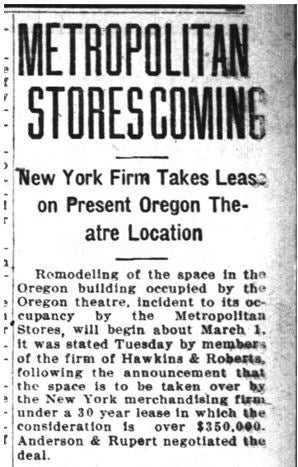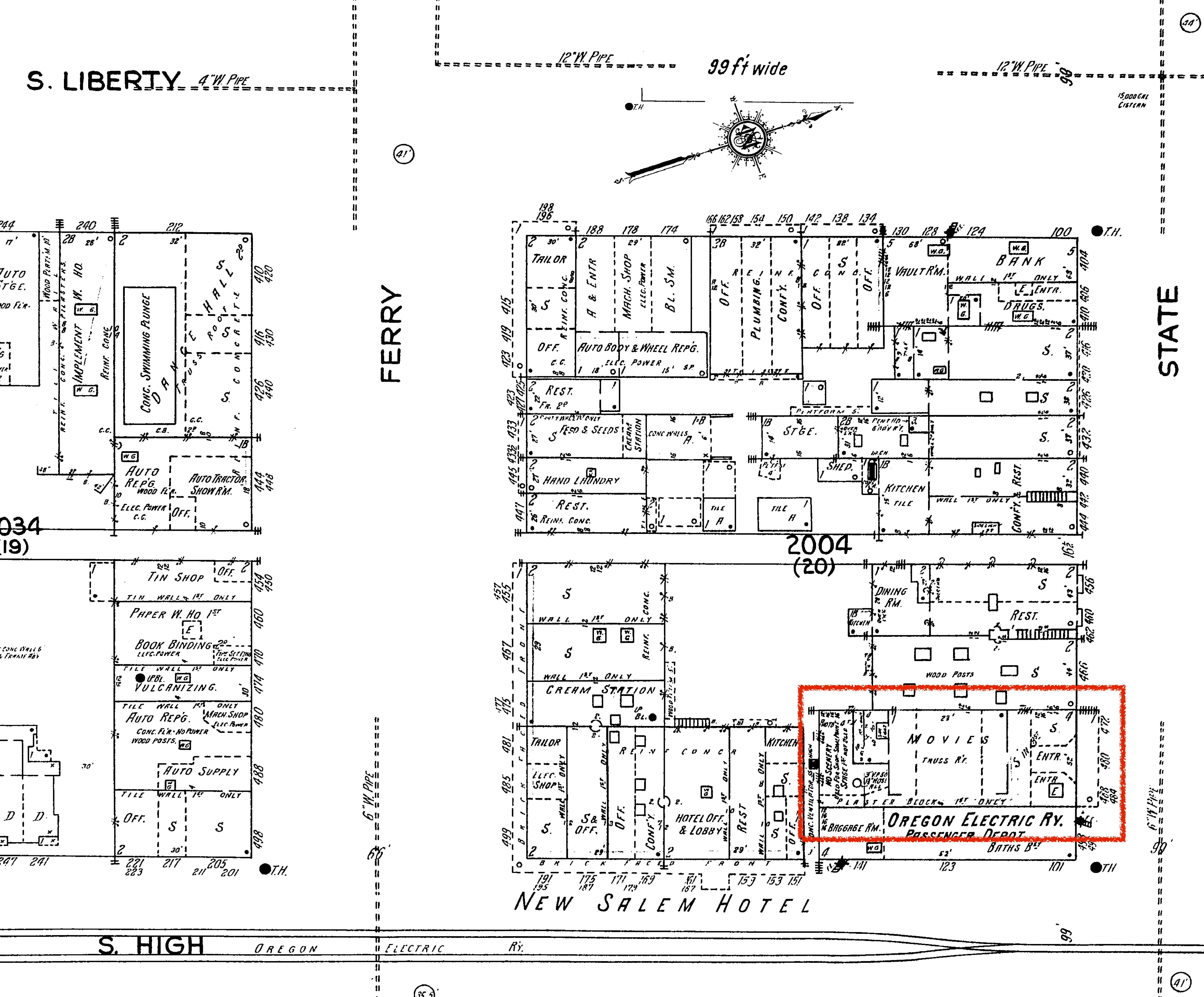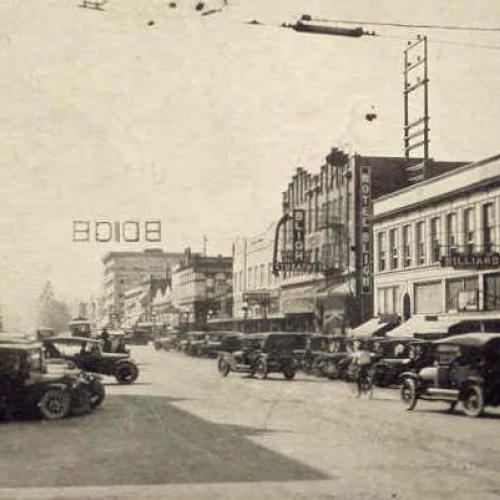Beginning around the mid-1910s, Salem newspapers began to devote page space specifically to discussing the moving picture attractions of the city. The Oregon theater began to buy space to run small blurbs promoting upcoming films, in addition to continuing to run small box ads on multiple pages of the papers. The papers also record specialty events taking place at the Oregon, such as lectures, traveling magicians, and the occasional vaudeville act. Some of these specialty shows were benefits for local organizations, or given for free for the purpose of education.
Meyers’ department store in Salem had many commercial and advertising tie-ins with the Oregon theater. A 1916 Meyers’ ad for a competition urges readers to vote at the ballot box located in the lobby of the Oregon. The prize was a gown chosen from the Meyers’ inventory (1). The Oregon also hosted Meyers’ Spring 1916 fashion show, drawing a crowd of hundreds to the venue (2, 3). The theater, which had been open about a year at this time, probably benefited most from the arrangement, and hosting the event helped the Oregon establish itself as a civic center in Salem.
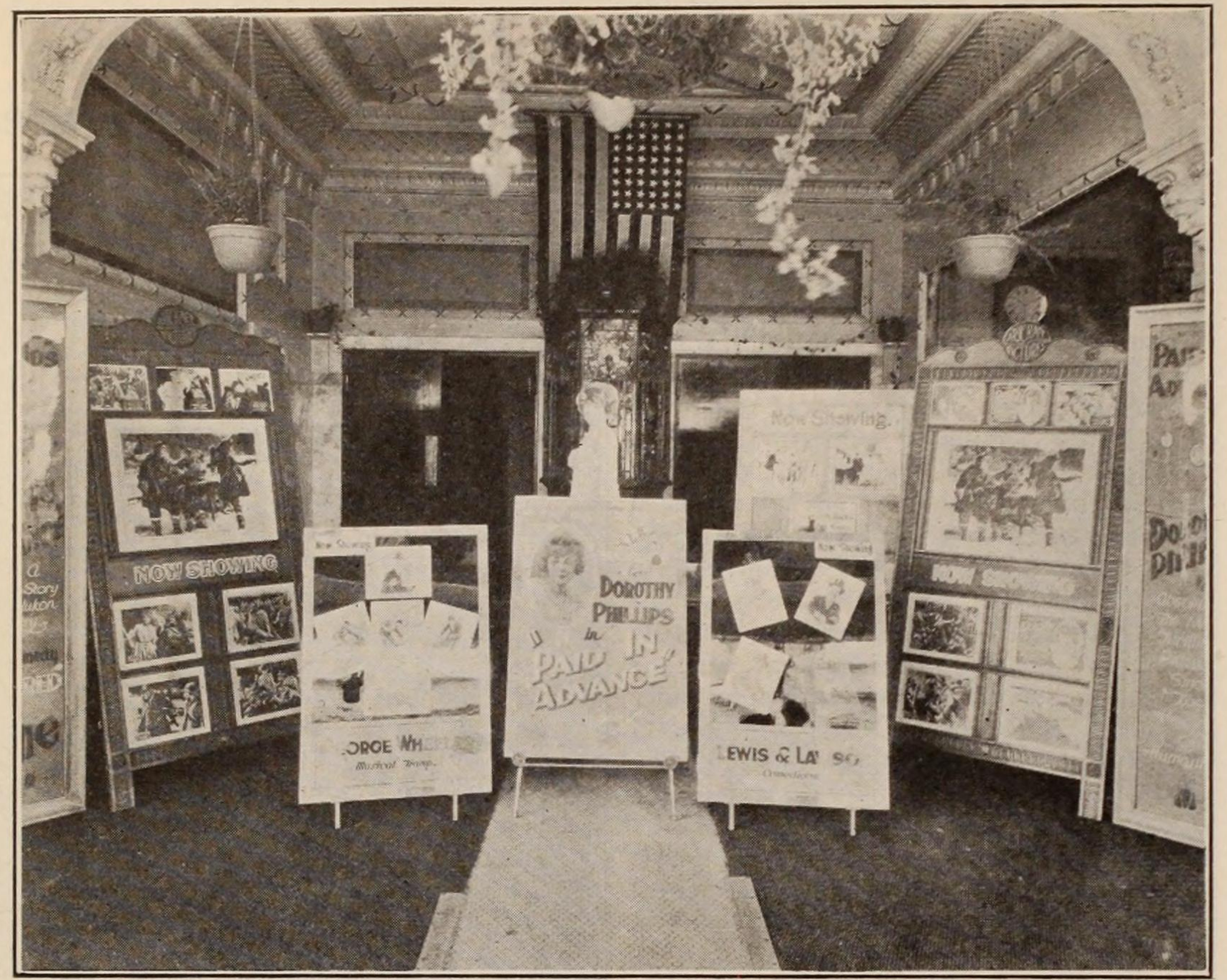
Around 1919 Oregon theaters in general were widely using lobby displays as a means of advertising. Charles Kupper used such displays frequently at the Oregon, including this spread to promote Paid in Advance, a September 1919 Universal release (4).
In 1921, with the murder trial of Roscoe “Fatty” Arbuckle in full swing in Los Angeles, Salem theater owners jointly agreed to a moratorium on Arbuckle’s pictures as long as he was accused of murder. “Of course we won’t show Arbuckle pictures here,” was Charles Kupper’s statement. Frank Bligh, owner and manager of several other Salem theaters, was “equally emphatic in his assertion that Arbuckle’s pictures will not be shown [in Salem] as long as he is charged with murder” (5).
In 1924 Thomas Grindley, a projectionist at the Oregon theater, created “animated posters” to show in the theater lobby. Although the construction and mechanism of these posters is unclear, the posters showed actors moving and interacting with each other, and the idea was revolutionary enough to warrant an article in First National Franchise (6).
This is a 1928 advertisement for fighting at the Oregon theater. Fighting was actually a large form of entertainment during time period; which is still accurate. In addition to this fight the theater had a charity fund attached to it. This entices more people to attend and to donate. A tactic which is still used, and proves to be helpful. The advertisement makes it seem like a very anticipated fight. It also suggests the theater has been putting on fights for awhile. It’s possible Oregon theater was the main place to go and watch fights.
This article and advertisement is for Peter Pan (Herbert Brenon, 1924). A short article accompanying the ad promoted the film as highly anticipated because it was a “different kind of motion picture (7).
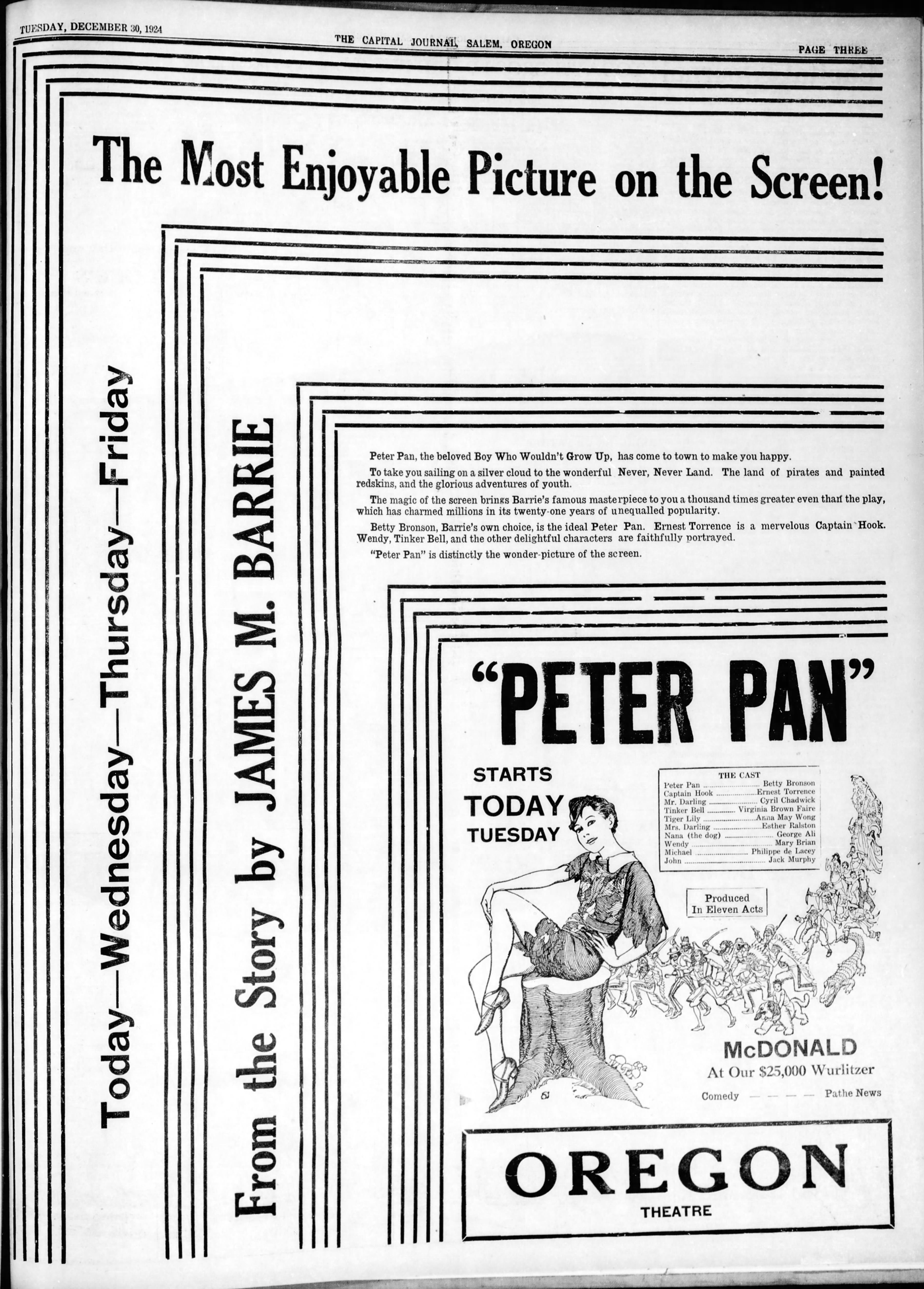
The Oregon theater closed in 1929, and was replaced with the "New York merchandising firm" Metropolitan Stores.
